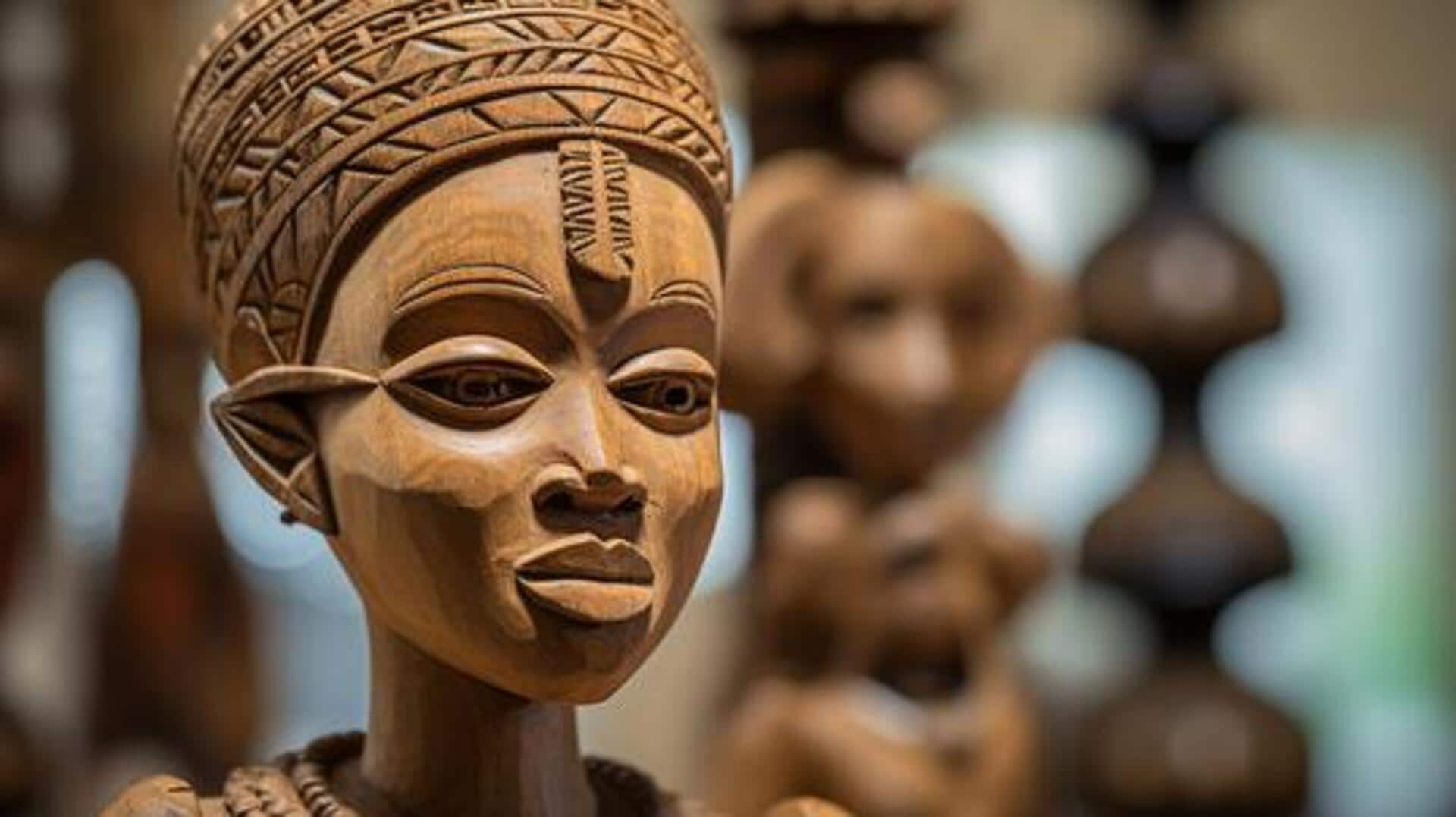
From wood to stone: 5 materials in sculpture art
What's the story
African sculpture is famous for its diversity and creativity, as artists use various materials to express cultural narratives and artistic visions. These sculptures often reflect the rich traditions and histories of various African communities. The choice of material plays a pivotal role in the aesthetic and symbolic value of each piece. Here are five unique materials commonly used by African sculptors.
Traditional material
Wood: A traditional choice
Wood stands as one of the most traditional materials in African sculpture. It is appreciated for its versatility, enabling artists to carve out intricate designs that tell cultural stories and beliefs. Varied types of wood are selected depending on availability, durability, and spiritual significance in diverse communities. The texture and grain patterns give depth to sculptures, making them visually appealing and also a medium for storytelling.
Durable medium
Stone: Durable elegance
Stone provides durability and an elegant finish that many African sculptors find alluring. Artists often choose stones like soapstone or granite because of their workability and natural beauty. Stone sculptures can vary from small figurines to larger monuments, with each needing skillful techniques to highlight detailed features. The permanence of stone makes it suitable for making pieces meant to last through generations.
Contemporary material
Metal: Modern adaptations
Metal has increasingly become the go-to medium for modern African sculptors looking to express creativity in new ways. Artists utilize metals like bronze or iron for their strength and capacity to be shaped into different forms through casting or welding techniques. Metal sculptures often feature contemporary themes while retaining ties with traditional motifs, providing a mix of old-world charm with modern innovation.
Natural medium
Clay: Earthy expressions
Clay offers an earthy medium giving artists flexibility in shaping figures with expressive detail. It is available widely across Africa, making it a practical choice for many sculptors who use both hand-building methods and molds in their work process. Once fired, clay becomes durable enough for long-lasting art pieces that capture cultural essence through form and texture.
Decorative element
Beads: Colorful embellishments
Beads are often employed as decorative elements in African sculpture, bringing in color, vibrancy, and symbolic meanings linked into beadwork patterns themselves. These differ from region to region, tribe to tribe, based on local customs and traditions surrounding these embellishments. They amplify the visual impact, adding to the narrative told by the base structure itself, be it a standalone piece or part of a larger installation ensemble.